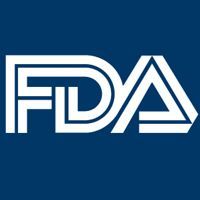Article
Waterjet ablation shows same efficacy in small, large prostates
Author(s):
Data from prospective clinical trials show that the efficacy of high-velocity waterjet ablation (Aquablation using the AquaBeam System) for improving BPH-related signs and symptoms is the same in patients with a large-to-very large prostate as in men with a small-to-moderate size gland, said Naeem Bhojani, MD, at the AUA annual meeting in Chicago.
georgerudy - stock.adobe.com

Data from prospective clinical trials show that the efficacy of high-velocity waterjet ablation (Aquablation using the AquaBeam System) for improving BPH-related signs and symptoms is the same in patients with a large-to-very large prostate as in men with a small-to-moderate size gland, said Naeem Bhojani, MD, at the AUA annual meeting in Chicago.
He presented data from follow-up to 12 months for men treated with waterjet ablation in the Waterjet Ablation Therapy for Endoscopic Resection of prostate tissue (WATER) and WATER II studies. WATER randomized men ages 45 to 80 years with a prostate between 30 cc and 80 cc to treatment with waterjet ablation or transurethral resection of the prostate (TURP). WATER II is a single-arm study, investigating the procedure in men with a prostate between 80 cc and 150 cc.
Dr. Bhojani reported that improvements in the International Prostate Symptom Score (IPSS) and maximum urinary flow rate (Qmax) after waterjet ablation occurred soon after the procedure and were similar in the WATER and WATER II studies. Treatment of men with large-to-very-large glands (WATER II) was not associated with a significant increase in mean operative time or patient length of stay. Waterjet ablation also had an acceptable safety profile in WATER II.
Also see - Emerging treatment options for ED: Hope or hype?
“There are limited surgical options for treating men with large prostates who are bothered by lower urinary tract symptoms related to BPH. Results from WATER and WATER II show that clinical outcomes for these patients can be normalized independent of prostate size,” said Dr. Bhojani, associate professor of urology, University of Montreal.
WATER II was undertaken based on the findings of a prespecified subset analysis of data from WATER that focused on men with a prostate volume >50 cc. Results showed that compared with the overall population, differences in efficacy endpoints favoring waterjet ablation over TURP were even greater among men with larger glands, and the rate of persistent Clavien-Dindo grade 1 or 2 events was slightly lower.
The analyses comparing outcomes from men treated in WATER and WATER II included data for 116 men enrolled in WATER and 101 participants from WATER II. The two groups of men were similar in their mean age and mean body mass index. Mean prostate volume was 54 cc for men in WATER and 107 cc for the WATER II cohort, and the middle lobe represented 50% of prostate volume for men in WATER and 83% of prostate volume for men in WATER II. There were no statistically significant differences between the two groups in mean baseline IPSS, Qmax, or scores on the MSHQ-EJD or IIEF-5 (SHIM) questionnaires.
Data for procedure outcomes in WATER and WATER II showed significant differences in mean resection time (3.9 vs. 8 minutes) and number of passes (1.1 vs. 1.8), but not in mean operative time (32.9 vs. 37.4 minutes). In both studies, men were discharged at approximately 1.5 days after the procedure. Mean days with a catheter were significantly longer for men in WATER II compared with WATER (3.9 vs. 2 days).
Next: Similar improvement in Qmax seenAt 3 months after waterjet ablation, prostate volume was reduced from baseline by a mean of 31% in WATER and 44% in WATER II. Efficacy data showed that men treated with waterjet ablation in WATER and WATER II achieved similar improvements over time in IPSS, storage, voiding, and quality of life scores. The two groups of men also had similar improvement in Qmax and similar reduction in postvoid residual urine volume. The retreatment rate at 12 months was 2.6% for the men in WATER, and no men in WATER II had been retreated.
Read - Testis Ca screening: Why USPSTF ‘D’ grade is misguided
Not unexpectedly, rates of Clavien-Dindo grade 1, 2, 3, and 4 complications were higher among men treated with waterjet ablation in WATER II. Notably in the WATER II study, the rate of de novo incontinence was low (2%), no men developed erectile dysfunction, and the rate of ejaculatory dysfunction was only 19% even in patients with gland sizes up to 150 cc.
“The fact that even in a group of men with gland sizes up to 150 cc, 81% of patients maintained antegrade ejaculation is very interesting considering that antegrade ejaculation is essentially universally lost after other surgical procedures for BPH,” Dr. Bhojani told Urology Times. Dr. Bhojani is a consultant to PROCEPT BioRobotics, which provided funding for the study.
















